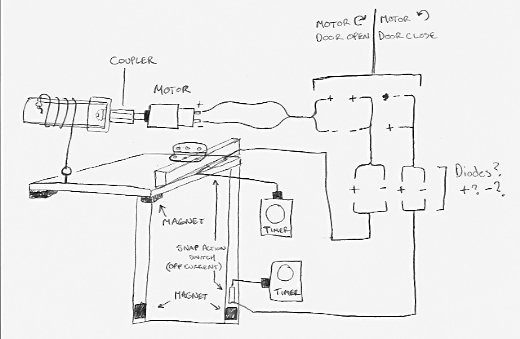- Thread starter
- #81
Dave, my brain is fried today, so I can't give you much of a reply. That said I'm pretty impressed so far!
Honestly, I thought you'd get stuck trying to mount the threaded bolt to the motor, but looks like you pulled that off pretty well.
I was also surprised that your nuts are fixed and your motor moves instead of the other way around. That is actually pretty clever!
I wouldn't have thought about a vertical door with that design, but I'm guessing that using a worm / screw drive and a very low RPM motor gives you plenty of power to go against gravity.
Can you take a close up pic of how you dremeled out and attached the shaft?
Honestly, I thought you'd get stuck trying to mount the threaded bolt to the motor, but looks like you pulled that off pretty well.
I was also surprised that your nuts are fixed and your motor moves instead of the other way around. That is actually pretty clever!
I wouldn't have thought about a vertical door with that design, but I'm guessing that using a worm / screw drive and a very low RPM motor gives you plenty of power to go against gravity.
Can you take a close up pic of how you dremeled out and attached the shaft?








